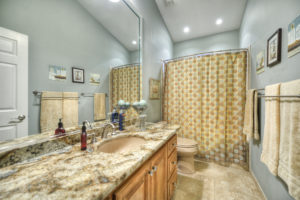 By Joe Szabo, Scottsdale Real Estate Team
If the very mention of the word yurt conjures up images of desert-worn tents in rural parts of central Asia, rest assured: Modern yurts draw their inspiration from these versatile living spaces — and make them even better.
Contemporary yurts are popping up everywhere — from small-town Arkansas to Zion National Park — as open, airy homes, backcountry destinations or even weekend glamping getaways.
Below are some of our favorites.
By Joe Szabo, Scottsdale Real Estate Team
If the very mention of the word yurt conjures up images of desert-worn tents in rural parts of central Asia, rest assured: Modern yurts draw their inspiration from these versatile living spaces — and make them even better.
Contemporary yurts are popping up everywhere — from small-town Arkansas to Zion National Park — as open, airy homes, backcountry destinations or even weekend glamping getaways.
Below are some of our favorites.
10 Yurts That Will Have You Dreaming of Your Next Adventure By Joe Szabo, Scottsdale Real Estate Team
 By Joe Szabo, Scottsdale Real Estate Team
If the very mention of the word yurt conjures up images of desert-worn tents in rural parts of central Asia, rest assured: Modern yurts draw their inspiration from these versatile living spaces — and make them even better.
Contemporary yurts are popping up everywhere — from small-town Arkansas to Zion National Park — as open, airy homes, backcountry destinations or even weekend glamping getaways.
Below are some of our favorites.
By Joe Szabo, Scottsdale Real Estate Team
If the very mention of the word yurt conjures up images of desert-worn tents in rural parts of central Asia, rest assured: Modern yurts draw their inspiration from these versatile living spaces — and make them even better.
Contemporary yurts are popping up everywhere — from small-town Arkansas to Zion National Park — as open, airy homes, backcountry destinations or even weekend glamping getaways.
Below are some of our favorites.

 Repeat steps 3 and 4 with the remaining strands.
Repeat steps 3 and 4 with the remaining strands.
 Sand the boards to remove any splinters.
Sand the boards to remove any splinters.
 Keep your home’s
Keep your home’s  When taking a shot from the curb, be mindful of your camera’s angle. The roofline should be parallel with the photo’s frame to make it look level — not like there’s a landslide on the property.
When taking a shot from the curb, be mindful of your camera’s angle. The roofline should be parallel with the photo’s frame to make it look level — not like there’s a landslide on the property.
 An attractive front door and entryway go a long way in setting the tone for the rest of your home. Leaving the door open in one of your photos can also send a welcoming message.
An attractive front door and entryway go a long way in setting the tone for the rest of your home. Leaving the door open in one of your photos can also send a welcoming message.
 Remove any threatening signs or barriers on the property before taking photos. The goal is to create a feeling of warmth with your listing photos — not scare onlookers away.
Remove any threatening signs or barriers on the property before taking photos. The goal is to create a feeling of warmth with your listing photos — not scare onlookers away.
 Taking a photo from above is a great way to show off a large property or a waterfront location. Crop the photo close enough so the home is visible without having to draw an arrow or a box around it.
Taking a photo from above is a great way to show off a large property or a waterfront location. Crop the photo close enough so the home is visible without having to draw an arrow or a box around it.
 Some folks use a fisheye lens to make smaller spaces appear larger. However, it often has the opposite effect, making the space feel smaller and distorted.
As a general rule of thumb, stick with a traditional lens for listing photos, and
Some folks use a fisheye lens to make smaller spaces appear larger. However, it often has the opposite effect, making the space feel smaller and distorted.
As a general rule of thumb, stick with a traditional lens for listing photos, and  You may think it’s best to skip the bathroom when taking listing photos, but if yours was recently updated, show it off! Bathrooms are among the first spaces to be upgraded in newly owned homes, and research shows that
You may think it’s best to skip the bathroom when taking listing photos, but if yours was recently updated, show it off! Bathrooms are among the first spaces to be upgraded in newly owned homes, and research shows that  While a vanity can be a selling point, you want buyers to picture themselves in the mirror — not you. Stay out of your listing photos by avoiding angles where you or your camera’s flash may be reflected.
While a vanity can be a selling point, you want buyers to picture themselves in the mirror — not you. Stay out of your listing photos by avoiding angles where you or your camera’s flash may be reflected.
 The goal is to put your home’s best foot forward. That means
The goal is to put your home’s best foot forward. That means If there’s one absolute “don’t” for listing photos, it’s capturing a mess. Tidy up each room before taking any photos so your home looks its best.
If there’s one absolute “don’t” for listing photos, it’s capturing a mess. Tidy up each room before taking any photos so your home looks its best.
 Even if your home has been on the market for a while, it will feel up-to-date if the photos reflect the season. If it’s summer, take a sunny photo of the backyard. If it’s winter, create a cozy feel with a fire and a warm blanket.
Even if your home has been on the market for a while, it will feel up-to-date if the photos reflect the season. If it’s summer, take a sunny photo of the backyard. If it’s winter, create a cozy feel with a fire and a warm blanket.
 Over-the-top holiday decor can be a turnoff, especially if buyers don’t celebrate that holiday. Instead, consider ways to decorate for the season as a whole and take photos of rooms without themed decor.
Over-the-top holiday decor can be a turnoff, especially if buyers don’t celebrate that holiday. Instead, consider ways to decorate for the season as a whole and take photos of rooms without themed decor.
 If the view is one of your home’s selling points, you’ll definitely want to show it off. It’s best if you can capture it with a part of the house in the shot, like the deck or porch. That way, buyers can picture themselves there.
If the view is one of your home’s selling points, you’ll definitely want to show it off. It’s best if you can capture it with a part of the house in the shot, like the deck or porch. That way, buyers can picture themselves there.
 Focus on the parts of your home that will be there when a buyer moves in. Unfortunately, your pets don’t fall into that category, as cute as they are!
Focus on the parts of your home that will be there when a buyer moves in. Unfortunately, your pets don’t fall into that category, as cute as they are!
 Archways, beams and other architectural quirks may be hard to photograph, but they give your home character. Try to capture a few of the architectural details if you can.
Archways, beams and other architectural quirks may be hard to photograph, but they give your home character. Try to capture a few of the architectural details if you can.
 Every home has its blemishes, but that doesn’t mean you have to capture them all in the photos. The listing is the time to put your best foot forward — the open house and inspection are when the buyer can take note of the imperfections.
You may also want to consider making a few small improvements, like
Every home has its blemishes, but that doesn’t mean you have to capture them all in the photos. The listing is the time to put your best foot forward — the open house and inspection are when the buyer can take note of the imperfections.
You may also want to consider making a few small improvements, like  While it’s easy to assume daytime shots are ideal, a nighttime exterior shot can create the right amount of contrast to make your photos stand out. The key is to leave your home’s interior and exterior lights on while you take the photo.
While it’s easy to assume daytime shots are ideal, a nighttime exterior shot can create the right amount of contrast to make your photos stand out. The key is to leave your home’s interior and exterior lights on while you take the photo.
 When it comes to interior photos, you want all the light you can get. Use lamps and daytime window light to make your photos as bright as possible while still looking natural.
When it comes to interior photos, you want all the light you can get. Use lamps and daytime window light to make your photos as bright as possible while still looking natural.








